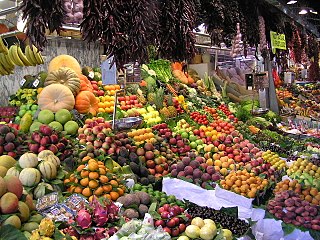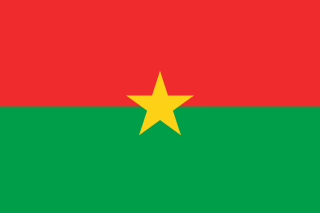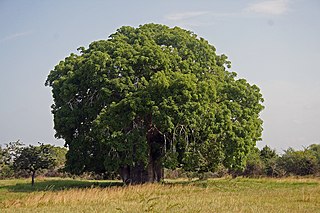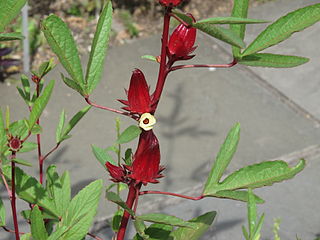Traditionally, the various cuisines of Africa use a combination of locally available fruits, cereal grains and vegetables, as well as milk and meat products, and do not usually have food imported. In some parts of the continent, the traditional diet features an abundance of milk, curd and whey products.

Ugandan cuisine consists of traditional and modern cooking styles, practices, foods and dishes in Uganda, with English, Arab, and Asian influences.

The cuisine of the Democratic Republic of the Congo varies widely, representing the food of indigenous people. Cassava is generally the staple food usually eaten with other side dishes.

Ghanaian cuisine is the cuisine of the Ghanaian people. Ghanaian main dishes are organized around a starchy staple food, with which goes a sauce or soup containing a protein sauce. The main ingredient for the vast majority of soups and stews are tomatoes- canned or fresh tomatoes can be used. As a result, nearly all Ghanaian soups and stews are red or orange in appearance.

Peanut stew or groundnut stew, called maafe, sauce d'arachide (French), tigadèguèna, or domoda, is a stew or sauce is a dish common to much of West Africa. It is a staple food in Western Africa. It originates from the Mandinka and Bambara people of Mali. Variants of the dish appear in the cuisine of nations throughout West Africa and Central Africa. It is very similar to groundnut soup. It may have a thicker consistency. Made from lamb, beef, chicken, or without meat, maafe is cooked with a sauce based on groundnuts, especially peanut butter/paste, and tomatoes. Peanut paste is sometimes used as an ingredient. Groundnut stew is sometimes prepared with the addition of meat, such as chicken, and vegetables. In Ghana, groundnut stew is often accompanied with fufu.

Haitian cuisine consists of cooking traditions and practices from Haiti.

West African cuisine encompasses a diverse range of foods that are split between its 16 countries. In West Africa, many families grow and raise their own food, and within each there is a division of labor. Indigenous foods consist of a number of plant species and animals, and are important to those whose lifestyle depends on farming and hunting.

Nigerian cuisine consists of dishes or food items from the hundreds of ethnic groups that comprise Nigeria. Like other West African cuisines, it uses spices and herbs with palm or groundnut oil to create deeply flavored sauces and soups. Nigerian feasts are colourful and lavish, while aromatic market and roadside snacks cooked on barbecues or fried in oil are plentiful and varied.

Pashtun cuisine refers to the cuisine of the Pashtuns, who are predominant in Afghanistan and western Pakistan. The cuisine of the Pashtun people is covered under Afghan cuisine and Pakistani cuisine, and is largely based on cereals like wheat, maize, barley and rice as well as a plethora of meat dishes that includes lamb, beef, chicken, and fresh fish. Accompanying these staples are also dairy products, including various nuts, locally grown vegetables, as well as fresh and dried fruits. Cities such as Peshawar, Jalalabad, Kabul, Quetta and Kandahar are known for being the centers of Pashtun cuisine.

Ivorian cuisine is the traditional cuisine of Côte d'Ivoire, or the Ivory Coast, and is based on tubers, grains, pig, chicken, seafood, fish, fresh fruits, vegetables and spices. It is very similar to that of neighboring countries in west Africa. Common staple foods include grains and tubers. Côte d'Ivoire is one of the largest cocoa producers in the world and also produces palm oil and coffee.
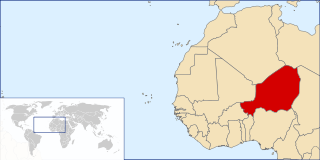
The cuisine of Niger takes after many traditional African cuisines, and a significant amount of spices are used in dishes. Grilled meat, seasonal vegetables, salads and various sauces are some of the foods consumed.

Chadian cuisine is the cooking traditions, practices, foods and dishes associated with the Republic of Chad. Chadians use a medium variety of grains, vegetables, fruits and meats. Commonly consumed grains include millet, sorghum, and rice as staple foods. Commonly eaten vegetables include okra and cassava. A variety of fruits are also eaten. Meats include mutton, chicken, pork, goat, fish, lamb and beef. The day's main meal is typically consumed in the evening on a large communal plate, with men and women usually eating in separate areas. This meal is typically served on the ground upon a mat, with people sitting and eating around it.

Central African cuisine includes the cuisines, cooking traditions, practices, ingredients and foods of the Central African Republic (CAR). Indigenous agriculture in the country includes millet, sorgum, banana, yam, okra, yellow onion, garlic, spinach, rice and palm oil. Imported crops of American origin include maize, manioc (cassava), peanuts, chili peppers, sweet potato and tomato. Additional foods include onions garlic, chiles and peanuts.

Togolese cuisine is the cuisine of the Togolese Republic, a country in Western Africa. Staple foods in Togolese cuisine include maize, rice, millet, cassava, yam, plantain and beans. Maize is the most commonly consumed food in the Togolese Republic. Fish is a significant source of protein, and bush meat is often hunted and consumed. People in Togo tend to eat at home, but there are also restaurants and food stalls.

Angolan cuisine is the cuisine of Angola, a country in south central Africa. Because Angola was a Portuguese colony for centuries, Portuguese cuisine has significantly influenced Angolan cuisine, with many foods being imported from Portugal.
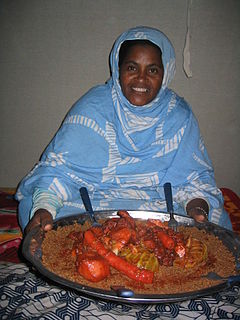
The cuisine of Mauritania includes the culinary practices of Mauritania. Historically, what is now Mauritania has been influenced by Arab and African peoples who have lived in and traversed the "stark" landscape marked with Sahara desert dunes in caravans. There is an overlap with Moroccan cuisine in the north and Senegalese cuisine in the south. French colonial influence has also played a role in influencing the cuisine of the relatively isolated land. Alcohol is prohibited in the Muslim faith and its sale is largely limited to hotels. Mint tea is widely consumed and poured from height to create foam. Traditionally, meals are eaten communally.
Barbadian cuisine, also called Bajan cuisine, is a mixture of African, Indian, Irish, Creole and British influences. A typical meal consists of a main dish of meat or fish, normally marinated with a mixture of herbs and spices, hot side dishes, and one or more salads. The meal is usually served with one or more sauces.

Riz gras is a meat- and rice-based dish in Burkinabé cuisine, the cuisine of Burkina Faso, Africa. It is also prepared in other African countries, such as Senegal and Guinea. It originated from the dish tiebou djen, a rice dish in Senegalese cuisine that is prepared with significant amounts of fish and meat.

